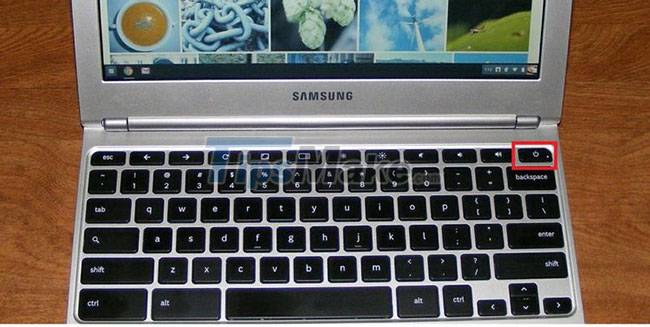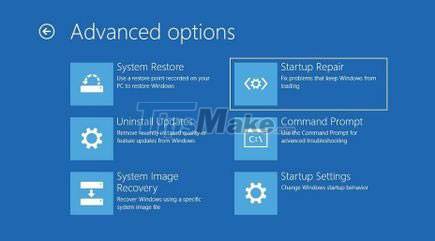Steps to fix 'Getting Windows Ready' error on Windows 10
However, for now, Windows 10 computers are still prone to random crashes. A common problem is that Windows gets stuck in a 'Getting Windows Ready' loop . In this article, Tipsmake will review with you some ways to get rid of this error.
5 useful ways to resolve the 'Getting Windows Ready' error
Anything can cause this problem on Windows 10, TipsMake.com has compiled the best methods you take to get back to your workflow. Let's start with the first and most basic way.
1. Give Windows a little more time

Sometimes the best thing to do is to do nothing. If you're not in a hurry, consider leaving the machine running. It's normal for the update process to take a while, especially if you haven't updated your PC in a while or your Internet connection is slow.
Try letting it update all day. If there is still no progress, then the problem may lie with another cause.
2. Check Internet Connection

As noted above, if there's something wrong with the Internet connection itself, then you're obviously going to have a hard time updating your PC. Double check to make sure that's not the case and try to resolve if this is the cause of the problem.
If you are using a wired connection, consider the router. Unplug it, let the router rest for a bit and then turn the router back on to see if that helps. If you are using WiFi, double check that it is working properly. If you think something is wrong, try some fixes or plug in an Ethernet cable.
3. Perform the forced shutdown process

If you've tried the two methods above and are still having problems with the "Getting Windows ready" screen, you should try shutting down your computer.
Note : Only try this method after having done the above methods.
When Windows is updating, an abrupt shutdown can result in damage to important system files. You may even experience the dreaded blue screen of death error on your computer.
Some might say that you won't lose files after a forced shutdown, especially after a new componentization construct that comes with Windows Vista, called Component-Based Servicing . Even so, the article always advises you to act with caution and never bet the system.
If you decide to give it a try, here's how you can go through the forced shutdown process: If you're using a laptop, press and hold the power button until the system shuts down. After that, reboot the system and you should see the updates downloaded again or the system will boot normally. If you are using a PC, simply disconnect the power.
If everything goes well, your computer should be up and running again without any problems.
4. Use the Startup Repair tool

Startup Repair is a handy, free tool found in the System Recovery Options menu on Windows operating systems. It helps you to automatically solve many complex problems related to random data loss, boot problems, etc. Follow the steps below to get started:
Step 1 : Create Windows installation media on USB. If you need advice on how to do this, follow TipsMake.com's guide on how to create Windows 10 installation media on USB.
Step 2 : Start the computer with the USB and select the Repair your computer option from there.
Step 3 : From there, select Troubleshoot.
Now, on the Advanced options screen , click on Startup Repair.
The Startup Repair option will start looking for errors and problems on the computer, then resolve as many errors as possible. Once the process is complete, shutdown and reboot to see if the problem persists.
5. Perform a factory reset
Factory Reset, as the name implies, completely erases the copy of Windows on your computer. It will then install a fresh copy of the operating system just like it did when you first bought it. This is a handy tool from Microsoft that can rescue you from all kinds of Windows problems.
Furthermore, it comes with two different reset modes: Keep my files and Remove everything . Keep my files will delete Windows and any additional apps and updates you've installed on it, but keep your documents intact. On the other hand, the Remove everything option will delete everything on the PC and then reinstall Windows from scratch.
Good luck with your troubleshooting!
You should read it
- Microsoft: Windows 11 is now ready for widespread rollout
- Printer error says Ready To Print but cannot print and how to fix it
- Ready for disaster
- Windows 11 compatibility error messages started showing up on unsupported PCs
- 11.6-inch netbook is ready
- Users are not yet ready to give up Windows 7
- How to login automatically to Windows 8
- Microsoft may bring Wi-Fi 7 to Windows 12 and even Windows 11
May be interested
- Steps to fix Windows 10 update error 0xC1900208
 0xc1900208 - 0x4000c is a common error when upgrading windows 10. follow these simple steps to fix 0xc1900208 update error in windows 10.
0xc1900208 - 0x4000c is a common error when upgrading windows 10. follow these simple steps to fix 0xc1900208 update error in windows 10. - How to fix error 0x8007045A ERROR_DLL_INIT_FAILED when using Windows Update
 during the process of using windows update or during an upgrade to windows 10 you receive an error message 0x8007045a error_dll_init_failed. this error occurs because the msxml dll file on windows operating system fails.
during the process of using windows update or during an upgrade to windows 10 you receive an error message 0x8007045a error_dll_init_failed. this error occurs because the msxml dll file on windows operating system fails. - How to fix error 0x80070070 on Windows 10
 any 0x80070070 error message is an upgrade issue with windows 10. in this guide, readers will learn the steps to fix 0x80070070 error when the device tries to upgrade to a new version of windows 10.
any 0x80070070 error message is an upgrade issue with windows 10. in this guide, readers will learn the steps to fix 0x80070070 error when the device tries to upgrade to a new version of windows 10. - Steps to fix error 0x80070490 when updating Windows 10
 instructions for 7 ways to fix potential windows update database error detected - error code 0x80070490 when updating windows 10 effectively.
instructions for 7 ways to fix potential windows update database error detected - error code 0x80070490 when updating windows 10 effectively. - Steps to fix Windows 10 update error 0xC1900107
 0xc1900107, windows 10 update error 0xc1900107 is quite common when upgrading to new versions. follow these steps to fix the problem quickly.
0xc1900107, windows 10 update error 0xc1900107 is quite common when upgrading to new versions. follow these steps to fix the problem quickly. - Steps to fix error 0x803fa067 when Active Windows
 error 0x803fa067 appears when active windows 10/11 makes many people unable to activate the copyright on the computer and not use all the features on the computer.
error 0x803fa067 appears when active windows 10/11 makes many people unable to activate the copyright on the computer and not use all the features on the computer. - The most effective way to fix sound loss error on Windows 11
 the sound loss error on windows 11 makes it impossible for users to listen to music, watch youtube videos without sound, play games without sound, etc. usually the sound loss error on windows 11 occurs due to software conflicts, not yet. install sound driver,... . to fix the sound loss error on windows 11 most effectively, readers can refer to the instructions shared in the article below and follow the steps.
the sound loss error on windows 11 makes it impossible for users to listen to music, watch youtube videos without sound, play games without sound, etc. usually the sound loss error on windows 11 occurs due to software conflicts, not yet. install sound driver,... . to fix the sound loss error on windows 11 most effectively, readers can refer to the instructions shared in the article below and follow the steps. - Steps to fix Recovery error on Windows computer
 this article will show you how to fix windows error recovery error and on windows 7, vista and windows 10 and how to fix could not find recovery error on windows 10
this article will show you how to fix windows error recovery error and on windows 7, vista and windows 10 and how to fix could not find recovery error on windows 10 - Steps to fix BackgroundTaskHost.exe error on Windows 11
 backgroundtaskhost.exe is a valid process and is part of the microsoft windows operating system. however, when working on your computer or launching an application, you may get a backgroundtaskhost.exe error.
backgroundtaskhost.exe is a valid process and is part of the microsoft windows operating system. however, when working on your computer or launching an application, you may get a backgroundtaskhost.exe error. - Steps to fix Windows Defender error 0x800700aa on the computer
 one of the common errors on windows defender is the '0x800700aa' error. the cause of the error 0x800700aa has not been specified, but we still have solutions to handle the error.
one of the common errors on windows defender is the '0x800700aa' error. the cause of the error 0x800700aa has not been specified, but we still have solutions to handle the error.










 How to fix Failure configuring Windows updates
How to fix Failure configuring Windows updates Steps to fix Taskbar error not working on Windows computers
Steps to fix Taskbar error not working on Windows computers Fix Windows + Shift + S shortcut not working on Windows 10
Fix Windows + Shift + S shortcut not working on Windows 10 Steps to fix the error that the computer does not recognize USB Boot
Steps to fix the error that the computer does not recognize USB Boot Fix error code 0x80242022 when installing Xbox games on Windows
Fix error code 0x80242022 when installing Xbox games on Windows